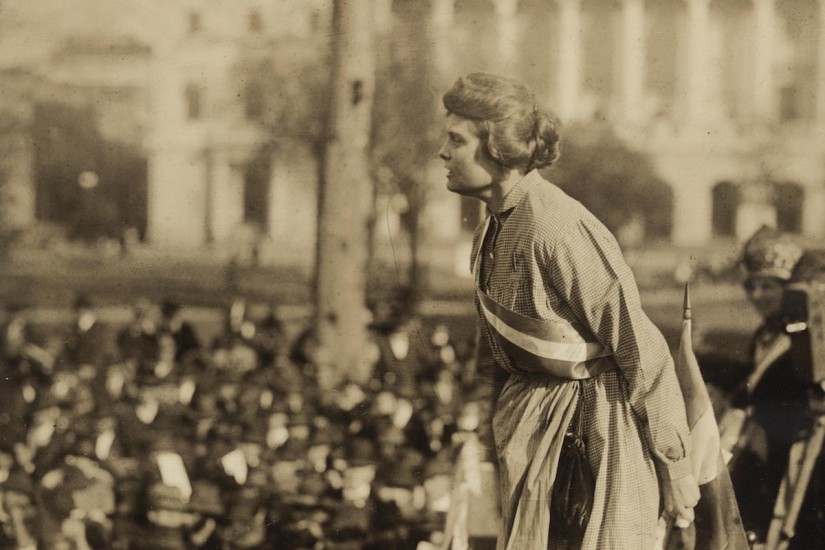Susan Anthony’s signature red-silk shawl became such a meme of the women’s movement that when she showed up on the podium of a suffrage convention without it draped around her shoulders, the reporters in the press box refused to write a word until she put it on: “No shawl, no story,” they insisted. Miss Anthony dispatched an assistant to fetch the shawl, and the convention received the news attention it deserved. Anthony’s protégé, twentieth-century suffrage leader Carrie Catt, adopted her own fashion totem: a bespoke, sapphire-blue “Ratification Dress,” which she wore while campaigning state to state in 1919 and 1920, stirring up enthusiasm for the approval of the Nineteenth Amendment.
Perhaps the most creative use, or subversion, of fashion norms were the tailor-made “prison outfit” re-creations worn by Alice Paul’s National Woman’s Party suffragists —who’d been imprisoned, tortured, and force-fed for picketing the White House — on their 1919 “prison special” cross-country publicity tour. Decked out in their prison garb, they led rallies and parades in cities across the nation, simultaneously advertising the cause while embarrassing Woodrow Wilson’s administration.
And then there’s the most prized — or despised —emblem of the suffrage movement: the “jail door pin” or “prison pin,” issued only to those suffragists who had served time for their acts of civil disobedience in the name of suffrage. A precise model of the cell doors in London’s Holloway Prison, complete with tiny bars and a little heart-shaped lock, this was one piece of jewelry that could not be bought; it had to be earned, at a dear personal price. Alice Paul, who earned her own pin during her time as a suffrage fighter in England, brought the pins home to the U.S. movement and bestowed them on her followers who had been “jailed for freedom.” Wearing the pin, in pride and defiance, signified a suffragist’s alliance with the more radical branch of the movement and also marked her for vilification by anti-suffragists, who would accuse her of being unpatriotic, even traitorous.
In addition to the press, the fashion industry also took notice. Clothing stores —like Macy’s, Best & Co., Bonwit Teller in New York, and Selfridge’s in London — grasped the retail opportunities of “suffrage marching outfits” and “suffrage blouses” and stylish but comfortable shoes for long demonstrations, advertising their wares in newspapers and suffrage journals. Women’s magazines offered patterns to sew your own suffrage-event attire. Suffrage was good business.
